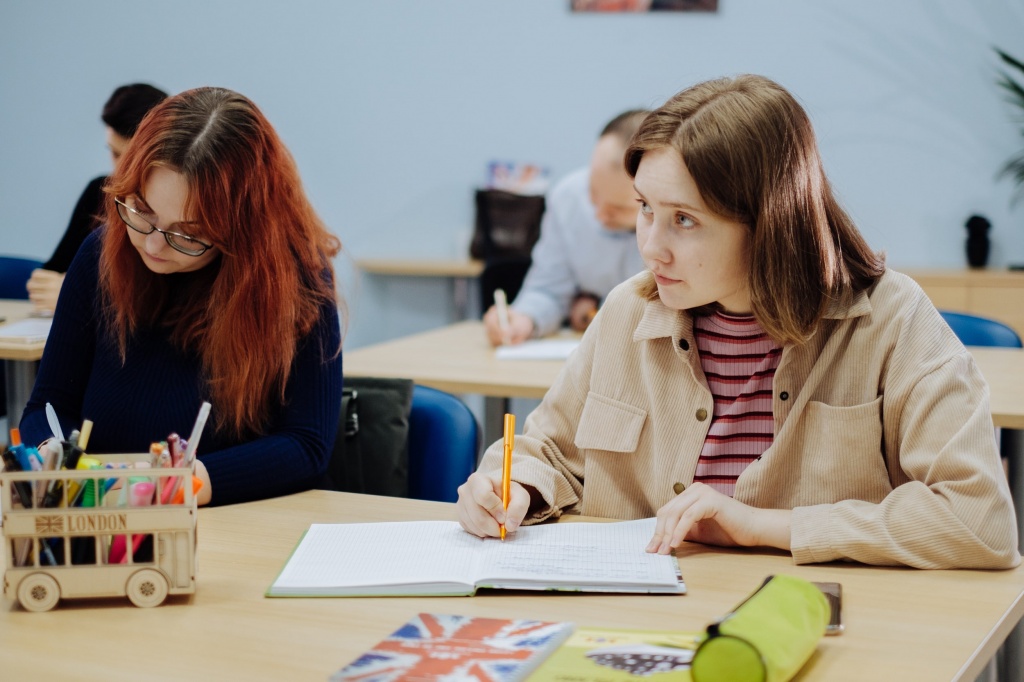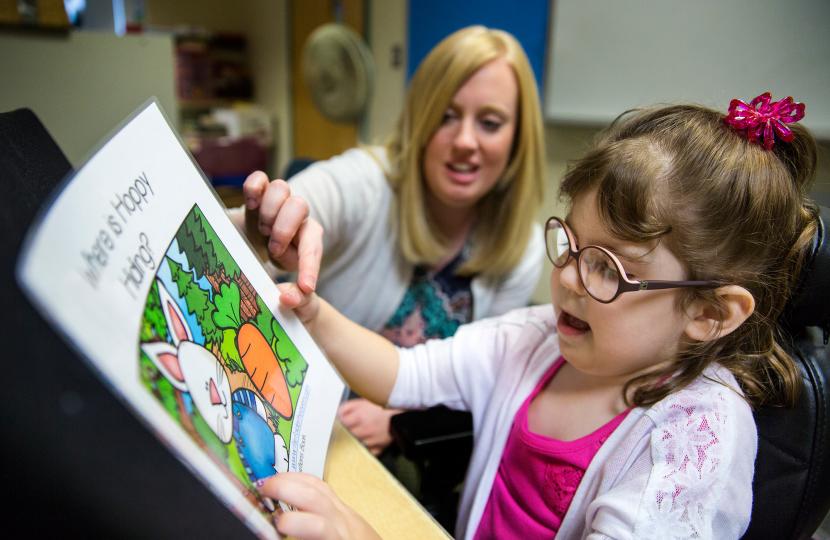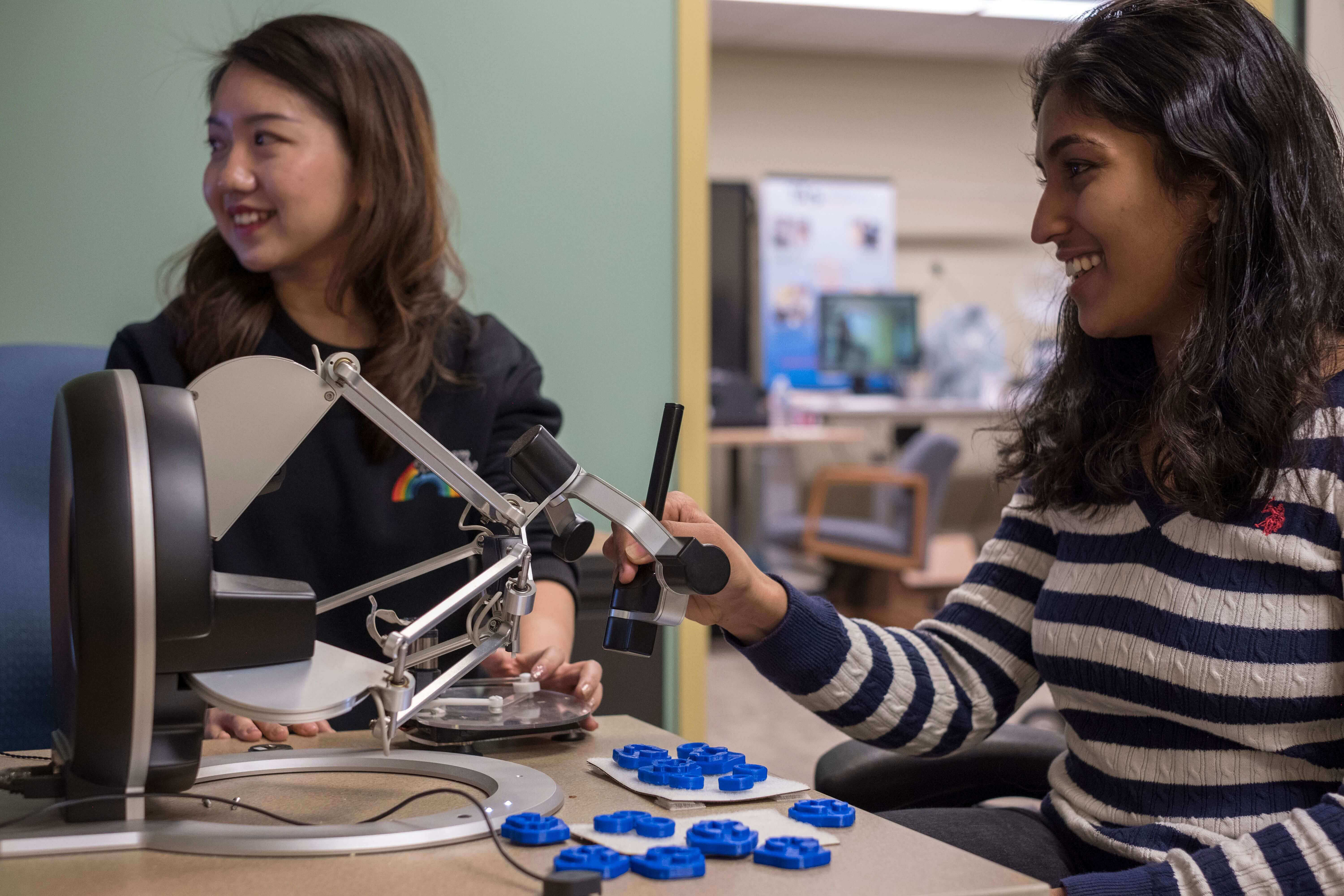
The creative artwork can be easily modified so visually impaired kids can participate, while younger kids frequently engage in artistic endeavours in the classroom.
Most kids of school age take advantage of this opportunity to interact with classmates who are usually developing. Adults and older students are welcome to attend community art sessions for fun.
Creative Art Area Adaptation for Visually impaired people
A creative art area is where children can experiment with various intriguing materials, regardless of whether art activities occur in your classroom, in a designated art room, or at home.
If your space has creative art activities, add items to make the movements more realistic; it gives people a way to show their creativity and self.
People may experiment with various materials, textures, and colours while honing their fine motor abilities. People with blindness can find this time more meaningful if you use different materials, add fragrances, and give it diverse textures.
Art and Craft Project Adaptations
You can provide the kids with explicit instructions on all aspects of the project. When the student hears other students receive directed descriptions of the project, they will benefit from hearing the communication for their reinforcement and recognize that different students require guided instructions. You should also utilize some of the following tips:
- Try to utilize natural light. Position the easel or work location so the sunbeams over the shoulder and on the work from behind.
- Label materials with a wide-tipped felt marker in large, bold lettering, or mark them tactilely with bump dots or Braille.
- Consider switching up your painting topics or styles. Instead of portraiture, try landscapes or abstract painting instead of realism.
- A task lamp with a flexible arm may direct light onto the work area. Some lights feature built-in magnifiers as well.
- With a vision rehabilitation professional, inquire about hands-free low vision equipment, such as spectacle-mounted telescopes. Electronic video magnifiers might be helpful while creating artwork.
5 things to consider while teaching visually impaired

We are accustomed to employing visuals, modelling, and gestures to assist kids in comprehending ideas and instructions while teaching art to students in a low-incidence group. Here are five things to remember while instructing visually challenged children in the arts:
Use both verbal and physical gestures.
Teachers are accustomed to visual and gestural cues with most visually impaired students. Still, we must employ verbal cues and either complete or partial physical gestures with children who are blind or have other visual impairments.
While blind children need more verbal cues than normal pupils, addressing their other limitations is crucial.
Physical prompting is essential since we can’t physically demonstrate to pupils what they should do; instead, we need to physically guide them so they can understand how to carry out the task.
Reconsider teaching art
Since visually impaired persons still exhibit tactile defensiveness or acquire all the spatial ideas necessary to complete an art piece, blind people occasionally struggle to finish their art assignments.
A Tactual Art resource provided another viewpoint from the Texas School for the Blind and Visually Impaired. Students who are blind can only truly enjoy art by utilizing their senses of touch and hearing because art is mainly visual.
Many more topics may be taught via painting to kids with visual impairments. Students can experiment with forms, textures, and material manipulation.
Put Tactile Materials to Use
For kids with visual impairments, having a range of tactile tools in the classroom makes learning more fun.
Additionally, utilizing a lacing card, students may practice their first sewing abilities while creating art by stringing beads.
You may use standard classroom supplies like pencils, paper, crayons, paint, and paintbrushes to create engaging learning activities.
Students with visual impairments should be taught how to use and label essential art equipment by touch.
It doesn’t follow that a pupil can’t enjoy the act of applying paint and forming brushstrokes on paper just because they can’t see their artwork.
Invest in Your Resources
When producing or customizing art projects for your visually impaired persons who are blind or have visual impairments, don’t be hesitant to use additional resources.
Ask your student’s vision itinerant during a consultation if your school does not have a vision teacher.
The art instructor at your school can be another option. Your art teacher could have had prior experience dealing with blind or visually impaired students.
Additionally, they have been collaborating with your kids throughout the academic year so that they may know effective modifications or projects for your children with low vision.
4 ways of being creative for the visually impaired community

Artwork that you can touch
Please don’t touch the art is a joint statement that we hear. But modern artist Andrew Myers, who lives and works in California, makes pieces explicitly to refute this offensive statement.
By screwing screws of various heights into wooden boards and forming pictures with specific gaps and grooves, the artist produces portraits that resemble geographical maps.
For art enthusiasts of all visual abilities, tactile art, such as Myers, which encompasses any work designed to be touched to be adequately appreciated, is captivating.
For those who are blind, tactile kinds of art offer a richer experience, from intricate ceramics to plastic sticking out from canvases.
Paintings with more texture for diversity
It is unnecessary to alter already completed works of art to make them more accessible to visually impaired people. Paintings, for instance, might be made from the beginning with this audience in mind, layering paint to increase the tactile sensation.
Although it’s standard practice for painters to layer paint to produce more textured pieces, it’s relatively uncommon for them to do it deliberately to make their art more inclusive.
Despite its unpopularity, painting with texture is a straightforward, low-tech technique to make art accessible to persons who are blind.
3D paintings
By producing touchable replicas of great works of art, 3D printing is democratizing art. Now, those who are blind or have limited vision, some of whom have never seen masterpieces like the Mona Lisa or The Scream, may navigate around these well-known pieces.
There are now 35,000 museums in North America, but 3D Printworks intends to someday offer accessible choices for art enthusiasts who can’t visit them all.
Tours of art galleries
For inclusion, some significant museums and smaller galleries are abandoning the “see, but don’t touch” maxim.
To do this, museums have started introducing touch and even scent to allow visitors who are blind to appreciate art.
Several museums and galleries have started offering tactile tours, which allow blind and poor-vision individuals to touch copies of well-known artworks.
These tours are intended to let those who are blind or have limited vision “see” with their minds rather than their eyes, according to a Guggenheim museum curator who spoke with The Atlantic.
What are the creative activities for visually impaired people?
Even if your vision may alter as you age, there is no need to limit your options for artistic pursuits. Here are some excellent and enjoyable things that you may perform.
It doesn’t matter if you have restricted movement or are visually impaired, with poor eyesight in general, or any other age or ability; they can all be performed.
Almost everyone prefers one type or style of art over another. Learning new skills is always good, whether you are visually impaired and wish to find an exciting trade or you are attempting to assist someone who is.
Painting and shading
Painting is the best method to express yourself and is also soothing. With practice and expertise, this calming hobby will improve.
If you are starting, you don’t need multiple resources. Only some paper and basic paints, and once you’ve earned more efficiency and are delighted by your painting accomplishments, you can buy more.
You might experiment with other painting materials such as oil paints, acrylic paints, and watercolour paints. You may even start painting on canvas to show off your creations.
Pottery
Pottery, made of clay, salt dough, or any comparable substance, is a terrific way to express yourself via your hands. Physical stimulation is provided by working your thumbs and fingers into the clay.
Determining what you want to create out of clay also benefits your mental health. To get started, choose an item or sculpture and try to reconstruct its picture in your mind using visual memory.
Then, using your hands, make your work of art based on this mental vision. Enjoy the numerous textures and forms you may make with the clay that reflect your thoughts and ideas.
Knitting
Knitting is another excellent pastime to keep your mind occupied and your fingers busy. The Knitting requires only a few pieces of equipment: needles, yarn/wool, and scissors.
Please ensure the needles are medium to large so that you can feel and see them. You may even acquire LED needles to make knowing what you’re doing easier.
- Choose a tightly woven yarn/wool to see/feel the stitches as you work them and the pattern as it advances.
- Choose a bright colour to make it simpler to know what you’re doing.
- The satisfaction from finishing a knitting project, in particular, is refreshing and makes the work worthwhile.
Weaving
If you want to weave, adding other textures, such as leaves or wicker, may make the experience incredibly satisfying for visually impaired persons.
Using liquid fabric on leaves may help them live longer than they would otherwise. The project will stand out from more traditional weaving patterns because of the added textures.
Work with beads
Beads come in various styles, sizes, colours, and materials, so there’s something for everyone’s taste in jewellery.
Threading the beads might be difficult for folks with weak vision, so consider purchasing a beading needle. They are often longer than standard sewing needles and have wider eyes to facilitate threading your needle simpler.
You may even acquire beads with Braille printed to make a lovely piece of jewellery with a meaningful message.
It’s lovely to have a finished product that you can wear or give to someone special. It makes you feel proud of your creations.
What are the challenges of Creative art workshops for Visually impaired people?
A more significant problem was ensuring that there must be such activities to fit the ability of the visually impaired. Focus on honing current abilities to acquire confidence in employing them in various settings.
Tactile art workshops, for example, may improve physical skills, which can aid everything from reading Braille to detecting new things.
Encourage critical and creative thinking by gradually giving instructions, asking children whether they could guess what would happen next, and enabling them to proceed at speed and design.
Designing a workshop that allows for creative freedom and supervised teaching is challenging. Participants must express themselves, but owing to the activities’ novelty, they require guidance.
On the other hand, workshops like these are just the beginning of a long journey toward absolute artistic independence in concept and approach. Artistic workshops will inspire students to learn about the powerful possibilities of art as a creative activity and potential source of income.
They will be able to envision fresh and complex ways to use fundamental techniques and procedures in everyday life if you teach them basic techniques and approaches. These programs establish the groundwork for a lifelong interest and a successful profession.
Conclusion
Daily chores a person without visual impairment could formerly do alone may frequently require assistance. They could also need help maintaining contact with their social circle, friends, and leisure activities.
A friend, family member, or instructor can aid your creativity by providing vocal instructions. They may walk you through the procedure as you work. Getting in touch with someone who previously worked with the blind or visually impaired is preferable.
Even if you have an illness or a visual impairment, you can do many entertaining and creative activities to keep your mind fresh and give you a feeling of success. Art is subjective and only has to be as excellent as you think.
FAQs
How do visually challenged persons interact with art?
Many blind and low-vision persons have encountered art through audio descriptions of artwork, whether recorded commentaries from museums or authentic explanations from friends.
What is the best technique to approach someone who is blind?
When describing anything to a blind, use a clear word image. You can address the visually impaired by touching its arm or using its name. It communicates that you are speaking to them and not everyone else in the room.
What are the perfect colours for the visually impaired?
Since of their propensity to reflect light, bright colours are often the simplest to perceive. Solid and vivid colours, such as red, orange, and yellow, are frequently more noticeable than pastels.



